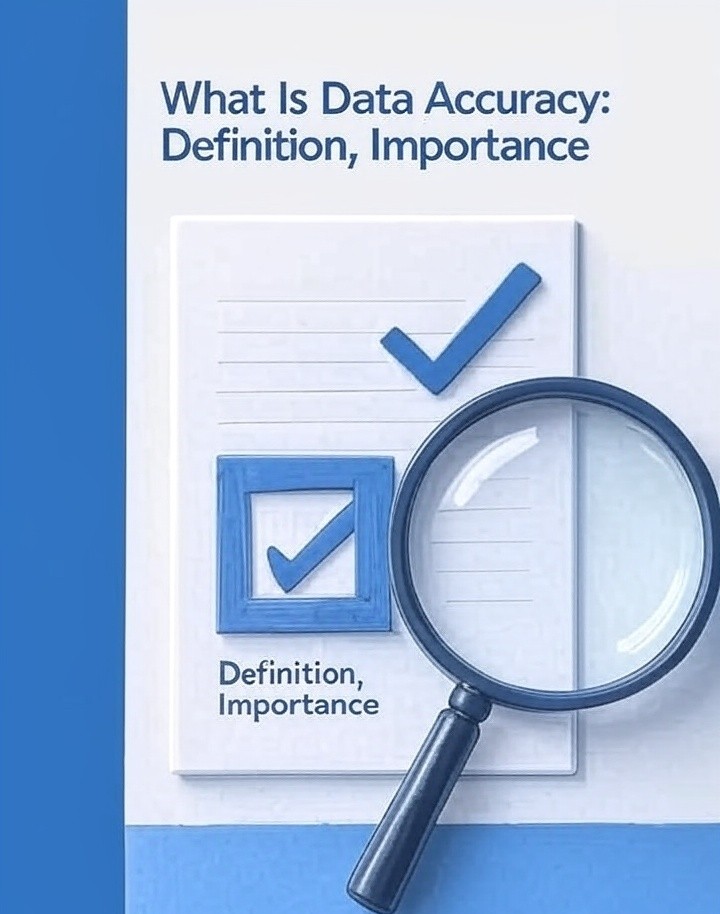
What Is Data Accuracy? Definition, Importance, and Best Practice
In an age where organizations rely on data to drive decisions, data accuracy—the degree to which information correctly reflects real-world entities or events—serves as the foundation for trust, reliability, and actionable insights. Ensuring high data accuracy not only safeguards against costly errors but also empowers businesses to make fact-based decisions, optimize operations, and maintain compliance with industry regulations.
Data accuracy is the measure of how closely data values align with their true, real-world counterparts. It encompasses dimensions such as validity (adherence to formats and business rules), completeness (no missing fields), precision (level of detail), and reliability (consistent results under identical conditions). Accurate data prevents misdeliveries, faulty calculations, and erroneous analyses that can undermine customer trust and damage reputations.
Maintaining data accuracy is critical because organizations depend on it for:
· Informed decision-making: Accurate data underpins reliable analyses and strategic planning.
· Regulatory compliance: Financial, healthcare, and other regulated industries face penalties when data errors breach standards like Sarbanes-Oxley or HIPAA.
· Operational efficiency: Clean, accurate data streamlines workflows, reduces rework, and lowers costs associated with error correction.
Best Practices for Ensuring Data Accuracy
To achieve and sustain high data accuracy, organizations should implement a multifaceted approach combining governance, processes, and technology:
-
Define Data Quality Standards
- Establish clear, measurable metrics for accuracy, completeness, and consistency aligned with business requirements. These benchmarks guide validation and audit activities.
-
Implement Data Governance
- Create a framework with defined roles (data stewards, custodians) and processes to oversee data policies, ownership, and stewardship across the organization.
- Enforce Data Validation Rules
-
- Apply automated and manual checks at the point of entry to verify formats, ranges, and business rules (e.g., date formats, numerical thresholds) before data is stored.
-
Conduct Regular Data Audits
- Periodically review datasets against defined standards to surface and correct inaccuracies, duplication, and inconsistencies before they propagate through systems.
-
Perform Data Cleansing
- Identify and correct or remove erroneous, duplicate, or outdated records via profiling and cleansing tools, ensuring datasets remain current and reliable.
-
Leverage Data Quality Tools
- Utilize specialized software for automated profiling, cleansing, monitoring, and lineage tracking to streamline quality management at scale.
-
Train and Engage Stakeholders
- Educate data creators and users on accuracy standards, entry procedures, and the impact of poor data quality, fostering a culture of accountability and continuous improvement.
Maintaining data accuracy is not a one-time project but an ongoing discipline that evolves with business needs, technologies, and regulatory landscapes. By embedding these best practices into everyday workflows, organizations can ensure their data remains a strategic asset rather than a liability.






